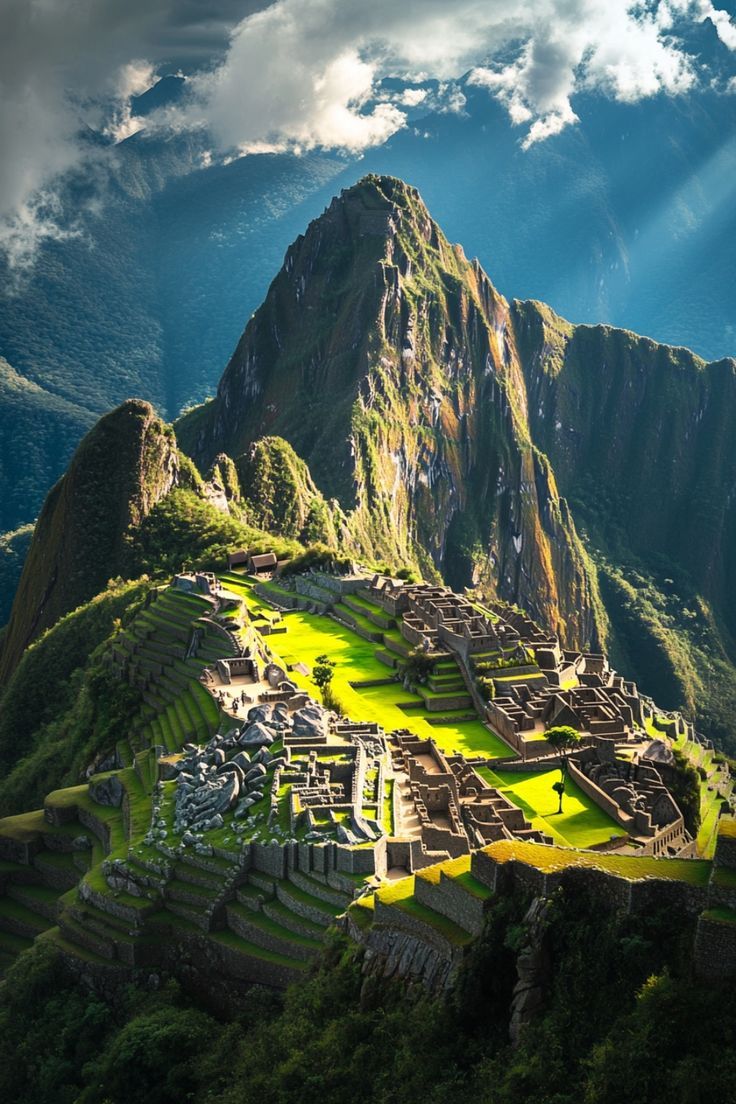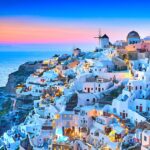Machu Picchu, Peru: Exploring the Ancient Wonder of the World
Introduction to Machu Picchu
Machu Picchu, Peru, is a name that resonates with history, mystery, and awe. Perched high in the Andes Mountains, this ancient Inca city is one of the most iconic archaeological sites in the world. Known as the “Lost City of the Incas,” Machu Picchu attracts millions of visitors annually, drawn by its breathtaking beauty, rich history, and spiritual significance.
This UNESCO World Heritage Site, recognized as one of the New Seven Wonders of the World, offers more than just stunning views. It serves as a gateway to understanding the advanced engineering, culture, and spirituality of the Inca civilization. In this article, we delve deep into the history, daily life impacts, significance, and frequently asked questions about Machu Picchu.
History
It was built in the 15th century by the Inca emperor Pachacuti. Nestled at an altitude of 2,430 meters (7,970 feet), the site was likely constructed as a royal estate or a sacred religious site. The city remained hidden from the outside world for centuries until its rediscovery in 1911 by the American historian Hiram Bingham.
The architecture of Machu Picchu reflects the ingenuity of the Incas, who designed the city to blend harmoniously with its natural surroundings. The use of dry-stone construction and precise engineering allowed the structures to withstand earthquakes and the test of time. Today, Machu Picchu stands as a testament to the architectural brilliance of the Inca civilization.
Daily Life Impacts
- Cultural Connection: For Peruvians, It is more than a tourist attraction—it’s a symbol of their rich heritage. It serves as a source of pride and connection to the ancestral Inca culture.
- Economic Boost: The site is a cornerstone of Peru’s tourism industry. The influx of visitors generates significant revenue, supporting local businesses and creating job opportunities for thousands.
- Environmental Awareness: It inspires people to appreciate and preserve the natural environment. The site’s stunning surroundings remind visitors of the importance of sustainable tourism.
- Spiritual Impact: Many visitors report a sense of spiritual renewal after visiting Machu Picchu. Its serene setting and mystical aura make it a place of reflection and inner peace.
- Education and Inspiration: For historians, archaeologists, and travelers, Machu Picchu is a treasure trove of knowledge. Its intricate structures and alignment with celestial events offer insights into the advanced understanding of the Incas.
Significance
- Cultural Heritage: As one of the last remnants of the Inca Empire, Machu Picchu is a vital link to the past. It provides valuable insights into Inca society, their religious beliefs, and their architectural ingenuity.
- Symbol of Resilience: The city’s survival through centuries of natural and human-made challenges symbolizes the resilience of both the Inca civilization and Peru as a nation.
- Global Recognition: Being one of the New Seven Wonders of the World, Machu Picchu is a global symbol of human creativity and engineering prowess. Its recognition draws attention to the importance of preserving historical sites worldwide.
- Ecological Importance: Located within the Peruvian cloud forest, Machu Picchu is home to diverse flora and fauna. Conservation efforts ensure the protection of this unique ecosystem.
- Tourism and Economy: Machu Picchu is a major driver of Peru’s tourism industry, significantly contributing to the country’s GDP and local livelihoods.
Fascinating Facts
- Machu Picchu means “Old Peak” in the Quechua language.
- The site was likely abandoned during the Spanish conquest in the 16th century.
- It is believed to have housed around 750 inhabitants at its peak.
- Machu Picchu is aligned with astronomical events, showcasing the Incas’ advanced knowledge of celestial phenomena.
- The site was rediscovered in 1911 but was already known to local indigenous people.
- UNESCO designated Machu Picchu a World Heritage Site in 1983.
- It contains over 200 structures, including temples, terraces, and living quarters.
- Machu Picchu’s construction used no mortar, yet the stones fit together so precisely that a knife blade cannot fit between them.
- The site is divided into urban and agricultural sectors, showcasing a sophisticated layout.
- Machu Picchu attracts over 1.5 million visitors annually.
FAQs
Q: How do you get?
A: Visitors typically reach Machu Picchu by train from Cusco to Aguas Calientes, followed by a bus ride or a trek to the site. Popular trekking routes include the Inca Trail and the Salkantay Trek.
Q: What is the best time to visit?
A: The dry season, from May to September, is ideal for visiting Machu Picchu. During this time, the weather is clearer, making it easier to enjoy the views and explore the site.
Q: Is wheelchair accessible?
A: The site has uneven terrain and steep steps, making it challenging for wheelchair users. However, efforts are being made to improve accessibility for all visitors.
Q: Do I need a guide to visit?
A: While hiring a guide is not mandatory, it is highly recommended to understand the history, significance, and layout of the site.
Q: Are there any restrictions for visitors?
A: To preserve the site, restrictions include limiting daily visitor numbers, banning drones, and enforcing rules against climbing on the ruins or removing artifacts.
Important Points for Visitors
- Plan Ahead: Tickets to Machu are limited and must be booked in advance.
- Respect the Site: Follow all guidelines to preserve the site’s integrity for future generations.
- Stay Hydrated: Bring water, as the high altitude can cause dehydration.
- Pack Light: Only small backpacks are allowed at the site.
- Wear Comfortable Shoes: The uneven terrain requires sturdy footwear.
Wishing and Importance to Society
It inspires wonder and serves as a reminder of the incredible capabilities of ancient civilizations. It is a place of learning, spiritual renewal, and cultural pride. Visiting Machu Picchu is often described as a life-changing experience, and it fosters a sense of global unity by bringing people from all corners of the world together in appreciation of shared history.
As we continue to preserve and celebrate It, let us remember its lessons of harmony, resilience, and ingenuity. Whether you’re an adventurer, a history enthusiast, or someone seeking inspiration, Machu Picchu promises an unforgettable journey into the past and the soul.











I every time emailed this webpage post page to all my contacts, for the reason that if like to read it next my contacts will too.